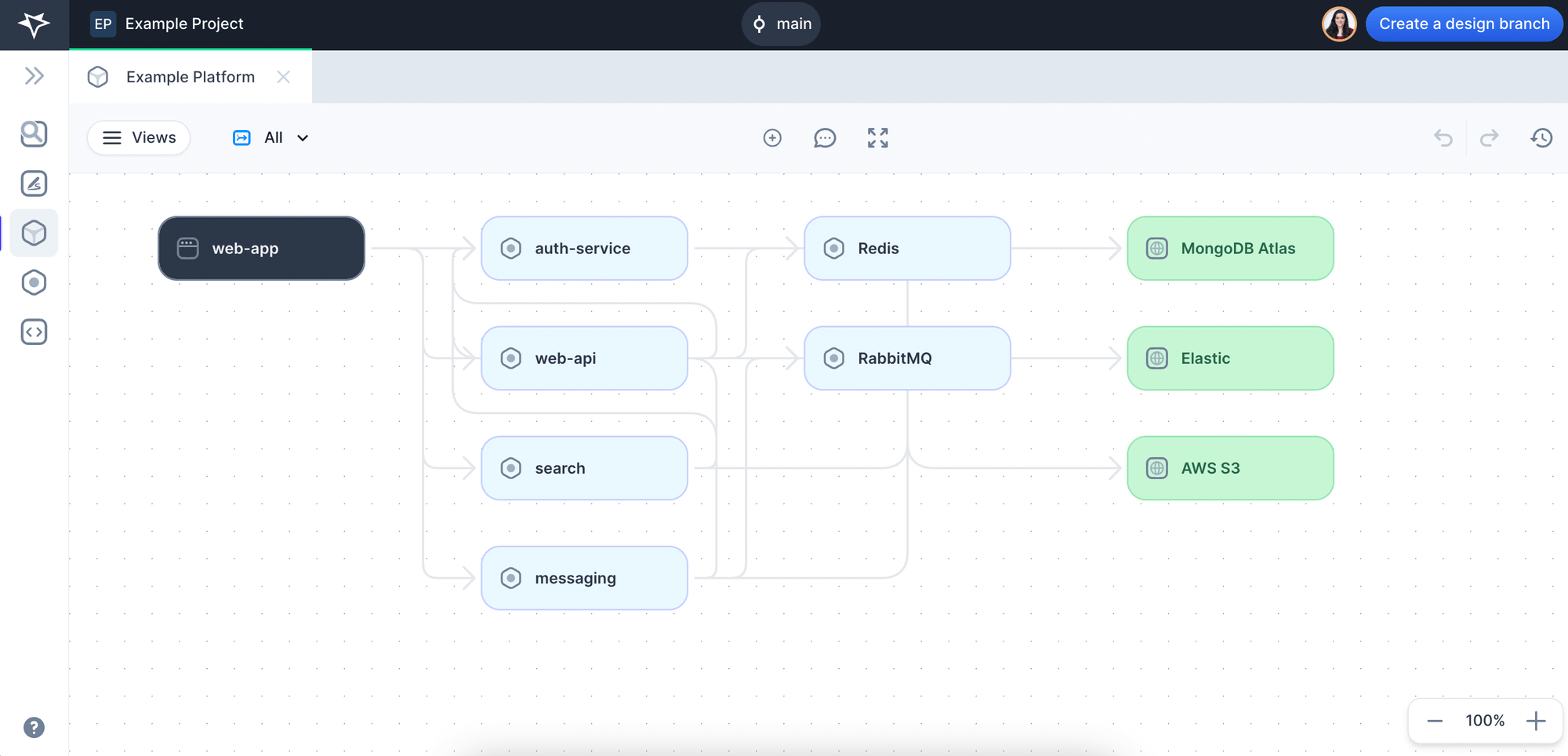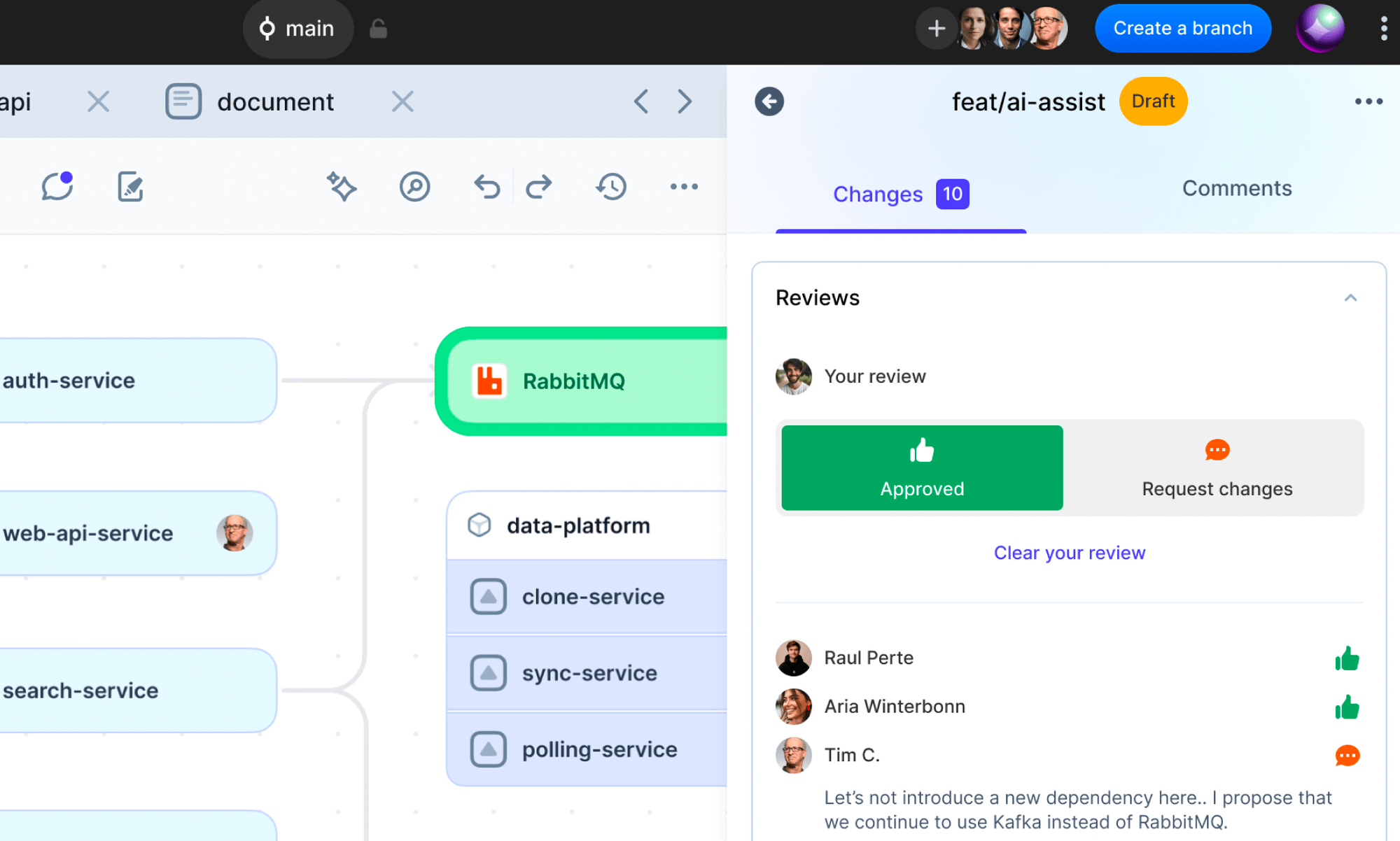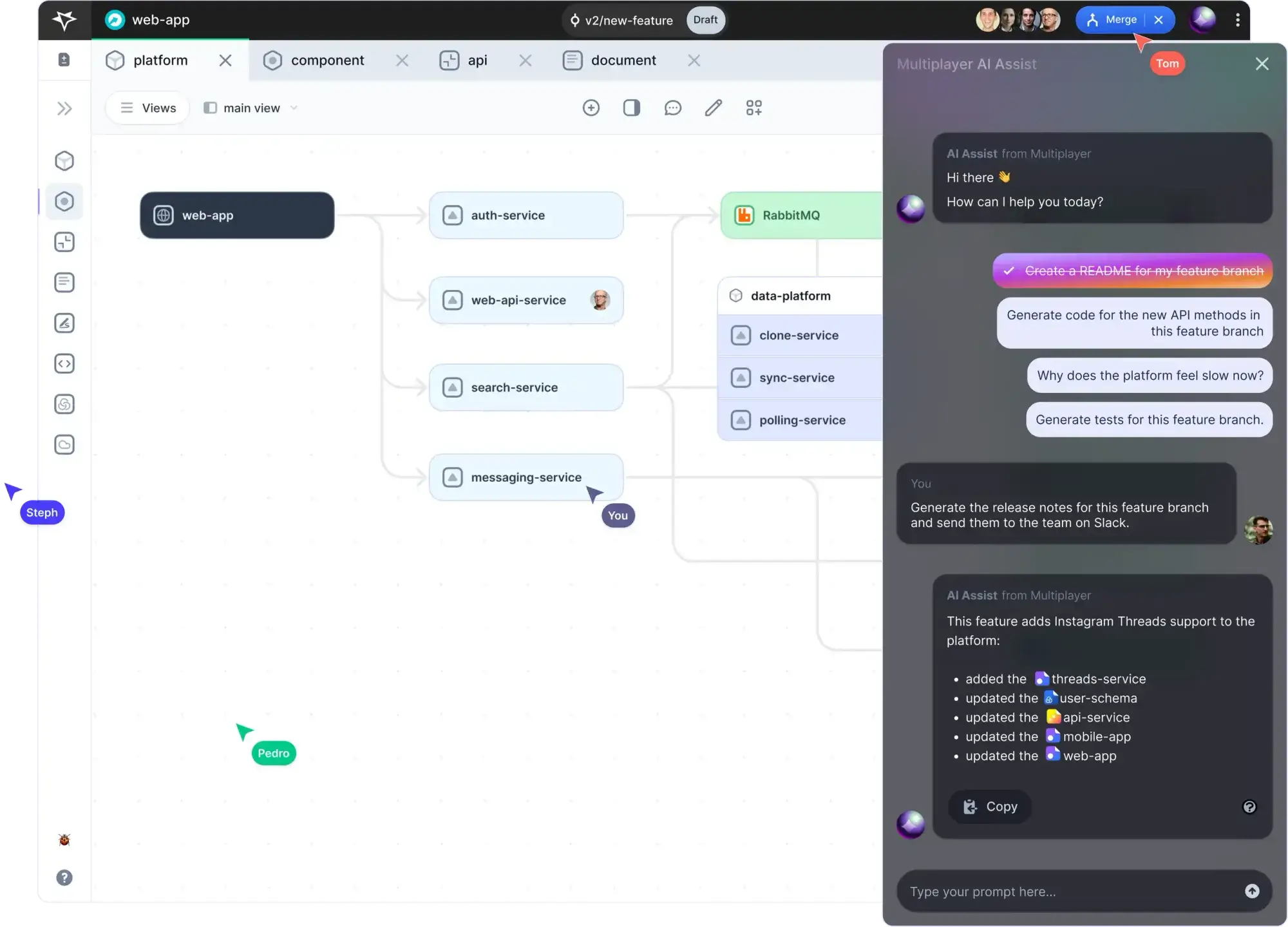Introducing the Multiplayer Beta: Design, Develop and Manage Distributed Software Better
We are thrilled to announce the public beta release of Multiplayer, a platform created to transform the way teams design, develop, and manage distributed software.

Drum roll, please!
The Multiplayer public beta is here to bring effortless system design, architecture visualization, and documentation maintenance to developers’ daily workflows.
Most modern software systems are distributed systems, but designing a distributed system isn’t easy.
The benefits of low-latency, highly available and scalable applications are clear, but the complexity of modern systems in terms of layers of software, new technologies, architecture patterns, and the number of tools needed to manage them continues to increase.
In today's rapidly evolving engineering landscape, it has become increasingly important for engineers to have a strong understanding of system design. As the foundation of any engineering project, system architecture provides a comprehensive blueprint outlining how various components and subsystems interact.
Backend software platforms can be complex and intricate, often overwhelming engineers who are new to the field. It doesn’t help that the available tools to visualize, observe and design systems are not purpose-built for developers.
The key to mastering system design and “taming” its inherent complexity, is to leverage tools that allow you to visualize all the components and dependencies of an architecture in real-time. You also need observability, including discovery, tracking and drift detection, version control, the ability to see diffs & changes easily, and more.
While your system's architecture may remain complex, designing and managing it doesn’t have to be complicated. With Multiplayer it becomes effortlessly collaborative and intuitive.
What are we trying to fix?
Multiplayer was built by a team of backend developers. We are painfully familiar with all the issues teams experience when designing a greenfield project, managing a legacy system, adding new features or re-factoring software.
They face a myriad of challenges that bog down efficiency and stifle innovation. Our mission is to solve the pain points that come with collaborating on distributed software.
- Lack of Immediate Architecture Insight. Current tools fail to provide a live view of system architecture, leaving teams in the dark about how components interconnect and what their dependencies are. At best, this gap leads to misalignment, prolonged onboarding, and challenges in security assessments. At worst, it can result in system failures, downtime, security vulnerabilities, integration problems, scalability issues, and more.
- High Maintenance Effort. Keeping architecture diagrams in sync with the actual systems demands considerable effort. And even then, architectural drift is a constant specter for most teams.
- Alignment Challenges. A persistent struggle to achieve consensus on system design before coding affects many different stakeholders (developers, architects, QA, DevOps, PMs, etc.). The lack of collaboration and planning results in errors, unnecessary rework, issues with implementation and the accumulation of Architectural Technical Debt due to overlooked system impacts.
- Fragmented documentation. Developers have to comb through multiple sources of knowledge (Jira, GitHub, Confluence, Slack, Notion, Google Doc’s, their coworker’s brains, etc.) to cobble together a complete picture of historical architecture decisions.
These pain points exist because current diagramming tools were not purpose-built for backend engineers working on distributed systems.
Better system design and architecture documentation
System architecture is a team sport, and Multiplayer is here to enable that.
Building a large distributed system without the proper tooling causes decreased productivity, misunderstandings, and ultimately, stalled progress.
That’s why our beta version of Multiplayer is packed with features designed to tackle the complexities of system design and architecture documentation head-on.
- Effortless Architecture Visualizations: Know how all the pieces in your system fit together. From the high level system design to the individual components, with their metadata, integrations, and dependencies.
- Architecture Version Control: Visualize system diffs and changes, without having to dig through your code. Effortlessly create branches, visualize changes, and understand how they could affect other components when designing a new feature, fixing a bug or updating your system architecture.

- Seamless Cross-team Collaboration: Enable your team to work together, anytime, anywhere. Design new features, communicate API changes and fix bugs without having to find a time that works in everyone’s time zone. Team members can share designs, discuss architecture changes and give feedback anytime, anywhere.
- Streamlined System Design Reviews: Refine your vision and gather feedback with ease. Make changes safely with insight into how they could affect your distributed architecture - from third party software to how customers and clients consume your services. Socialize your solutions with all relevant teams and understand the potential consequences before jumping into code.
- Contextual Views: Visualize complex systems with the right level of detail depending on your audience. Create filtered views for Developers, Architects, DevOps, QA, Business Leaders. Zoom in to see intricate details or zoom out for higher levels of abstraction.

- A Single Source of Truth for your System Information: Pull all your assets into a single, secure location and remove all knowledge silos. Plug and play with your existing tools and create a 360° view of your system information - including architecture diagrams, sketches, decision records, APIs, repos, and more.
- Map and Manage your SaaS Sprawl: Track all of your services and systems, creating a comprehensive software component catalog. Developers can find what they need, when they need it and team leads can have full visibility into their company’s technology landscape.
What’s coming next
Multiplayer’s journey is just beginning and the beta launch is a crucial step towards creating a tool that will set new standards for collaborating on distributed software.
Next quarter we will be adding the following features to the product:
- System Architecture Observability: Automatically discover, track, and detect drift in your system architecture, dependencies and APIs by directly connecting to your infrastructure. Get a sense of the state of your backend software platform even if your developers haven’t written a single Open API. You’ll never be stuck manually updating a diagramming tool or your documentation again.
- API Design & Management: Design, track, and document your APIs, including all the diffs & changes. Commit changes to your repos through direct integrations with GitHub, GitLab or Bitbucket.
- Boost your team’s productivity with the power of AI: Preemptively uncover the unknown unknowns and address bugs just by chatting with your system architecture, API’s and dependencies. Stay ahead of the game with proactive system reports and optimization recommendations, and generate code from your designs.
We are committed to continuous improvement and are eager to incorporate feedback from our beta users to enhance the platform.
Try out the product now, explore its features, and let us know how it can be improved to better serve your needs! Your insights are invaluable as we strive to make Multiplayer the go-to platform for system design and architecture documentation. 💜

